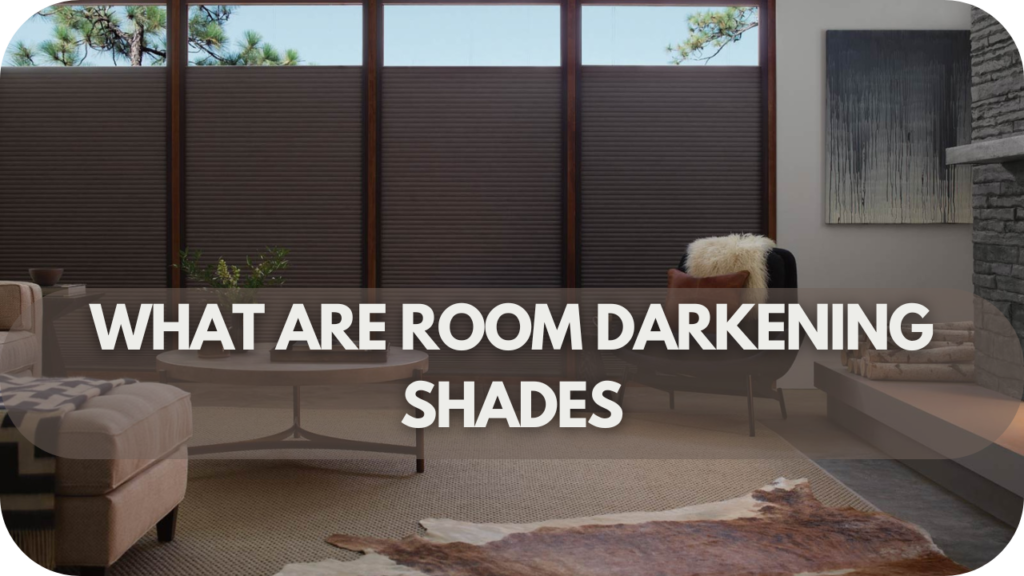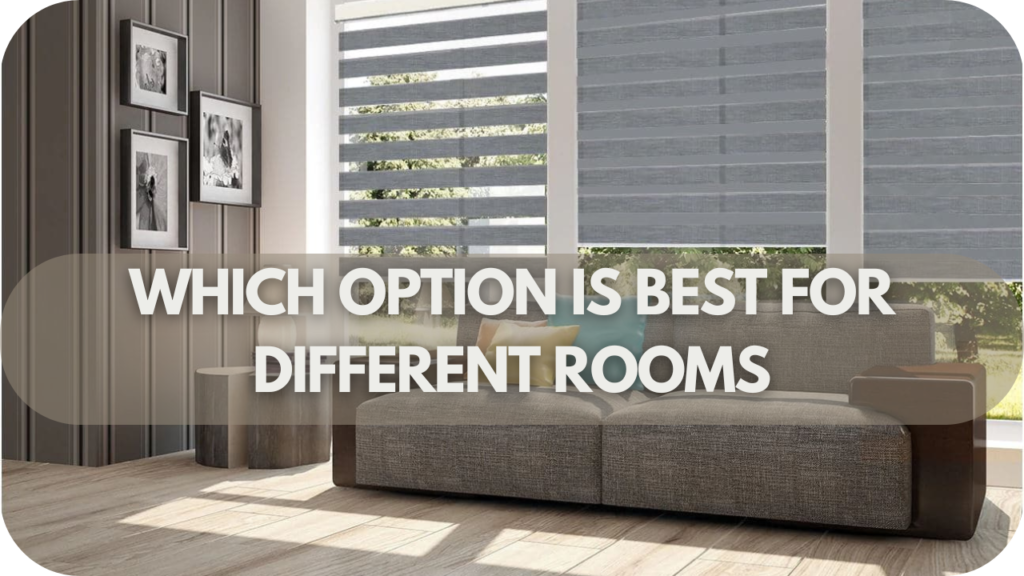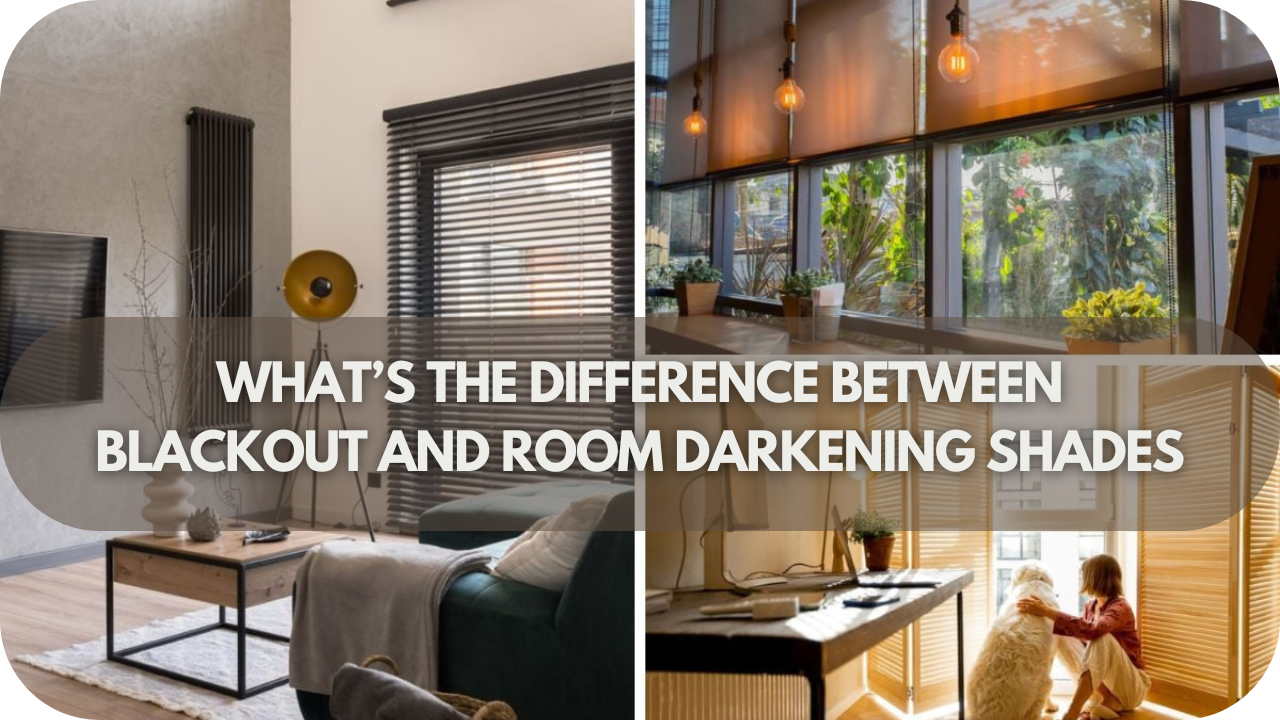When I first set out to create a cosy, dark bedroom for better sleep, I assumed any heavy curtain or shade would work. However, I soon realised that not all window coverings perform the same.
Discovering the difference between blackout and room darkening shades completely shifted my approach. Knowing how each option manages light transformed how I chose the right shades for each room. I’d like to help you make the best decision for your home, too.
What’s the Difference Between Blackout and Room Darkening Shades?
Blackout shades block 100% of light, creating complete darkness, making them ideal for bedrooms or media rooms. Room darkening shades reduce light significantly but do not block it entirely, allowing some ambient light to filter through. They’re perfect for living spaces where you want privacy and reduced glare without total darkness.
What Are Blackout Shades?

Blackout shades are designed to block 100% of incoming light. Made from thick, opaque materials, these shades prevent light from passing through, ensuring complete darkness. You’ll often find them used in bedrooms, nurseries, or media rooms where total light control is essential.
The fabric or material is often lined or coated with a special backing that enhances its light-blocking ability. In addition to their light blocking features, blackout shades also offer excellent privacy. With interior lights on, no one can see through them, even at night.
Blackout shades’ insulating properties can help reduce energy costs by keeping rooms cooler in summer and warmer in winter. Despite their practical benefits, they come in various colours and styles to suit different interior designs.
Most types can easily be fitted within or outside the window frame, offering flexibility. Whether you’re a light sleeper or need to eliminate glare for a home theatre, blackout shades provide the perfect solution.
What Are Room Darkening Shades?

Room-darkening shades are designed to reduce light but not completely block it. While they filter out a significant amount of sunlight, they allow a small degree of ambient light to pass through. Typically made from lighter fabrics than blackout shades, they provide a good balance between light control and maintaining some natural light.
They are ideal for spaces where you want to reduce glare and maintain privacy without creating total darkness. Living rooms, home offices, and dining areas are perfect candidates for these shades. Regarding confidentiality, room-darkening shades obscure the view from the outside, but they won’t offer the complete privacy of blackout options.
Energy efficiency is another benefit, as room darkening shades can help regulate indoor temperatures by blocking out some sunlight, keeping spaces more relaxed in the summer and warmer in the winter. Installation is straightforward, and like blackout shades, they come in various colours and styles to suit different decor.
Key Differences Between Blackout and Room Darkening Shades
Understanding the key differences between blackout and room-darkening shades is crucial when deciding between them. Each offers unique benefits regarding light control, privacy, and energy efficiency.
Let’s break down the main distinctions between the two:
| Feature | Blackout Shades | Room Darkening Shades |
| Light Blocking | Blocks 100% of light, creating complete darkness. | It reduces light significantly but allows some ambient light. |
| Privacy | Total privacy, no visibility through the shade, even at night. | Moderate privacy; some shapes or shadows may be visible. |
| Material | Thick, often with a special light-blocking coating. | Lighter fabrics that filter but do not block all light. |
| Best Use | Ideal for bedrooms, nurseries, and media rooms. | Suitable for living rooms, offices, and dining areas. |
| Energy Efficiency | Excellent insulation, helping to regulate room temperature. | It provides some insulation but is less effective than blackout shades. |
| Aesthetic Options | Available in various colours and styles. | Comes in a wider variety of lighter fabrics and designs. |
Which Option Is Best for Different Rooms?

Selecting the right shades for each room can enhance both functionality and comfort. Blackout shades are perfect for bedrooms, especially if you’re a light sleeper or need to create a dark environment for better rest. They achieve complete darkness, promoting uninterrupted sleep and blocking out streetlights.
In contrast, room darkening shades work well in living rooms and home offices. Significant glare reduction and enhanced privacy are desired here, but total darkness is unnecessary. These shades maintain a balance between light control and natural illumination.
Blackout shades are also beneficial in nurseries and media rooms. Infants and children can sleep more soundly with reduced light, and film enthusiasts can enjoy an actual cinematic experience.
For spaces like dining areas and kitchens, room darkening shades provide ample light control while still allowing some natural light to enter, making these areas comfortable and inviting.
Consider energy efficiency as well; blackout shades offer superior insulation, which is ideal for rooms where temperature regulation is crucial. Each type of shade has its perfect application, so matching them to your needs will maximise their benefits.
Factors to Consider When Choosing Between Blackout and Room Darkening Shades
Choosing between blackout and room darkening shades involves several important factors. Here’s what you need to keep in mind:
- Purpose of the Room: Determine whether you need complete darkness or reduced light. Bedrooms and media rooms often benefit from blackout shades, while living areas may only require room darkening options.
- Light Control Needs: Assess how much light you want to block. Blackout shades offer 100% light blockage, ideal for those needing absolute darkness while room-darkening shades filter light but allow some through.
- Privacy Requirements: Consider your need for privacy. Blackout shades provide total privacy, blocking out visibility completely, whereas room darkening shades offer moderate privacy, with some potential visibility through them.
- Energy Efficiency: Reflect on the energy-saving aspects. Blackout shades provide better insulation, keeping rooms cooler in summer and warmer in winter, which benefits energy savings.
- Aesthetic Preferences: Match the shades to your decor. Blackout and room-darkening shades are available in various colours and styles, but the material and thickness may differ.
- Budget and Installation: Evaluate your budget and the ease of installation. Both shades come in various prices and installation methods, so choose based on your preferences and budget constraints.
Can You Combine Blackout and Room Darkening Shades?

Combining blackout and room-darkening shades can be a clever way to achieve complete darkness and versatile light control. Layering these shades offers enhanced flexibility, allowing you to tailor light levels to your daily needs.
One effective method is to install blackout shades as the primary layer, which provides 100% light blockage and privacy. Over these, you can add room darkening shades to adjust the light filtering without completely losing natural illumination. This setup is beneficial in spaces like bedrooms, where you might want total darkness at night but some light control during the day.
Another option is to use both shades on separate windows or in different parts of the room. For instance, blackout shades can be used on windows facing streetlights, while room-darkening shades can be installed on windows with less direct light exposure.
Customisation allows for optimal light control and energy efficiency. Combining both shades maximises their benefits, offering complete darkness when needed and softer light control for daytime. This approach enhances comfort and adds a touch of style to your interiors.
Conclusion
Selecting between blackout and room-darkening shades hinges on your light control, privacy, and energy efficiency needs.
Explore our extensive options to find the perfect fit for your home. Contact us today for expert advice and personalised recommendations tailored to your space.


